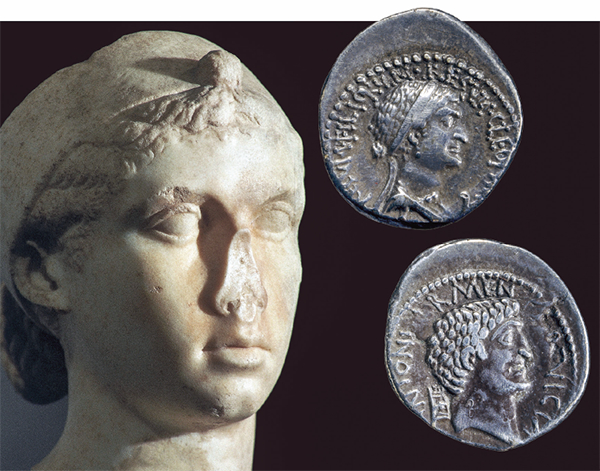Image Details

Bust: © DeA Picture Library/Art Resource, NY
FINAL PHARAOH. Renowned for her beauty, intelligence and cunning, Cleopatra VII was the last ruling pharaoh of the Ptolemaic Dynasty in Egypt. She secured her throne by aligning herself with two of the most powerful men in the Roman world: Julius Caesar and, later, Marc Antony. Roman historian Cassius Dio described her as a “woman of surpassing beauty” with “a most charming voice and a knowledge of how to make herself agreeable to everyone” (Roman History 42.34.4). The Greek historian Plutarch paints a slightly different picture of the queen’s beauty: “For her beauty, as we are told, was in itself not altogether incomparable, nor such as to strike those who saw her” (Life of Antony 27.2). He explains that instead Cleopatra’s charm lay in her discourse, presence and character.
The upper left bust from the Vatican Museum and upper right silver denarius from the collection of the British Museum are some of the few representations of the famous Egyptian queen to have survived from her lifetime. The bust was sculpted between 50 and 30 B.C.E. Minted in 32 B.C.E., the coin depicts Cleopatra on one side (top) and Marc Antony on the other (bottom).
